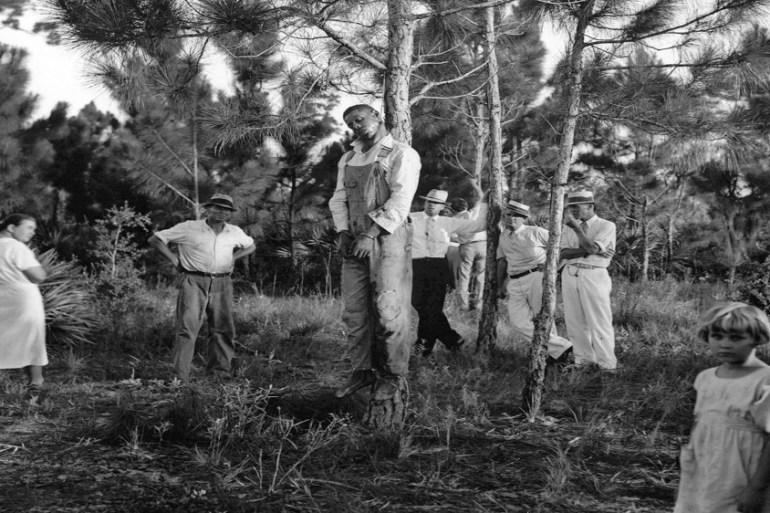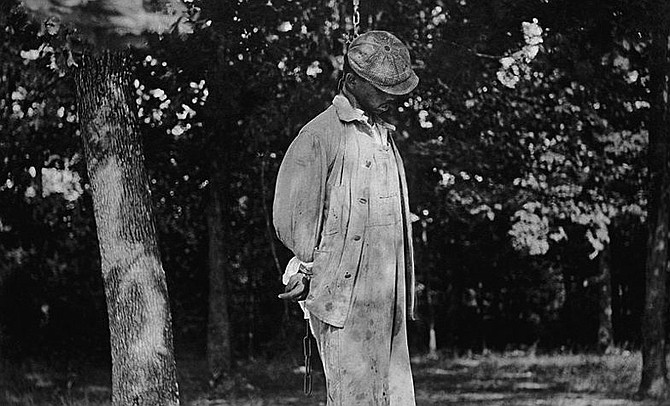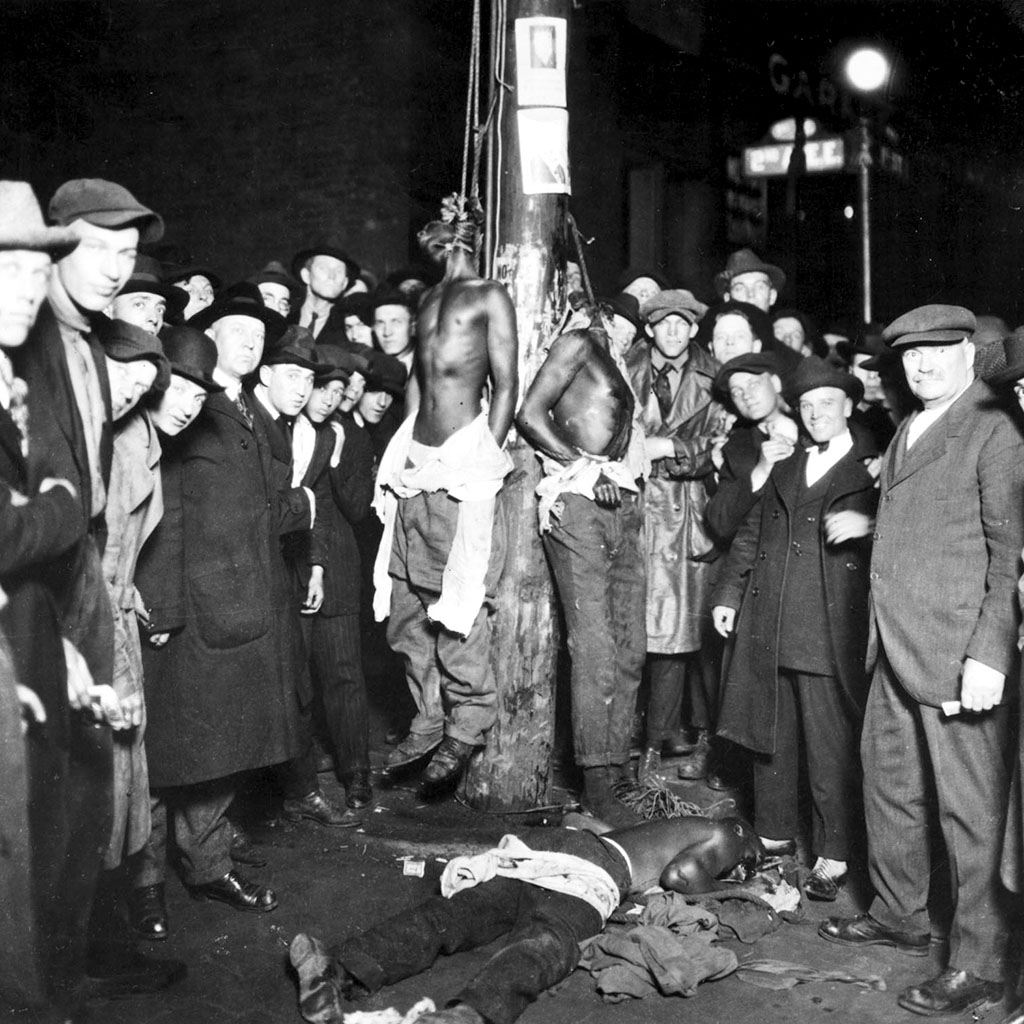
*From 1882 to 1968, 4,743 lynchings occurred in the U.S., according to records maintained by NAACP. Other accounts, including the Equal Justice Initiative’s extensive report on lynching, count slightly different numbers, but it’s impossible to know for certain how many lynchings occurred because there was no formal tracking. Many historians believe the true number is underreported. It is hard to find a timeline as far as when lynching began, but there were records of lynchings during slavery; however, they really amped up after the Civil War during Reconstruction when freed slaves and Blacks who’d never been enslaved started to gain prominence in political affairs, starting all-Black towns, registering to vote, and getting an education. These were acts that not only aroused White suspicions but also enraged them – how dare those inhuman beasts try to do what by rights belong only to the White man!
The total number of Black people lynched is around 3,446 though that number quite possibly is higher due to underreporting. This means that 72% of all lynching victims were Black. Others include Mexicans, Chinese people, ethnic Whites such as Italians, and other nationalities. The reasons for these lynchings were questionable, some even downright made up or absent: the majority of the time, the victims were accused of having intimate relations with White women. Other reasons for murder, robbery, arson, or just vagrancy. One man was lynched for going to the door of a White family to knock on it begging for food! If you didn’t speak to White people respectfully or keep your eyes averted when they talked to you, you could easily lose your life. It is no different when members of the BIPOC community deal with White policemen today.

As Black Americans fled the South to escape the terror of lynchings, a historic event known as the Great Migration, people began to oppose lynchings in a number of ways. They conducted grassroots activism, such as boycotting white businesses. Anti-lynching crusaders like Ida B. Wells composed newspaper columns to criticize the atrocities of lynching. And several important civil rights organizations — including NAACP — emerged during this time to combat racial violence. NAACP led a courageous battle against lynching. In the July 1916 issue of The Crisis, editor W.E.B. Du Bois published a photo essay called “The Waco Horror” that featured brutal images of the lynching of Jesse Washington. Washington was a 17-year-old Black teen lynched in Waco, Texas, by a white mob that accused him of killing Lucy Fryer, a white woman. Du Bois was able to turn postcards of Washington’s murder against their creators to energize the anti-lynching movement. The Crisis’s circulation grew by 50,000 over the next two years, and we raised $20,000 toward an anti-lynching campaign. – NAACP, History of Lynching in America*
Lynchings nationwide started to decline in the 1930s, and 1952 was the first year in which a lynching was not recorded. Unfortunately, this was not the end of such brutality for merely 3 years later, 14 year-old Emmett Till was lynched in a horrifying, barbaric manner simply for wolf-whistling at a White woman in Money, Mississippi. The shocking crime helped to motivate young Black people into joining the Civil Rights Movement. An all-white jury acquitted the two men accused, who later bragged about their crimes in a magazine article. They both died unrepentant for the gruesome torture-murder. You might think of lynchings as a disgraceful and barbaric practice from the past, but they continue to this day. In 1998, James Byrd was chained to a car by three white supremacists and dragged to his death in the streets of Jasper, Texas. In 2020, Ahmaud Arbery was fatally shot while jogging near Brunswick, Georgia. The three white men charged with killing Arbery claimed he was trespassing. The videotaped death of George Floyd was a modern-day lynching. Floyd was killed in broad daylight by police officer Derek Chauvin, who held Floyd down with a knee on his neck for more than nine minutes.*

My late father’s adoptive father (who was really his uncle) knew lynching victims, and I think he even saw one. This really shaped his views of White people for years, till his death to be honest – while his wife had a special love for White people such as today’s coonservatives do, Mr. Spence hated White people and did not even like my father’s younger daughter whose mother was White. My father’s aunt also despised White people. I remember riding with her somewhere and we passed the old bus station, and she mentioned how Black people had to go downstairs – into the basement, I’m guessing – and she also referred to Whites as ‘those people’. White people and their sycophants call that sort of thing ‘reverse racism’ but it isn’t.
Whites today love to place nooses in areas where the members of the BIPOC community live, work, and play. Recently, a noose was found on the property of an Asian woman, Julia Ho, by a Black contractor. No one knows of the noose was put there to intimidate the contractor, or to scare the woman who was out of town at that time of the incident. “My first reaction, my first emotion was really just rage that somebody would do this,” Ho said. “This was no sort of amateur thing. This was clearly done by somebody who knew how to do it, and who knew exactly what message they were sending.” We all know that anti-Asian hate crimes have been rising ever since Chump and his ‘Wuhan/China virus’ nonsense, and according to the WP, more than 50 nooses have been discovered at construction sites all over the US. “I want to know what people in my neighborhood think about this, and the best way to do that is to talk to them,” Ho said. “That being said, I don’t feel safe going alone, it is very high likelihood that whoever did this is in my immediate vicinity. So it’s not something that I can just go and do on my own, and I really need the community to be out there and to support me with it.” – Chad Davis, St. Louis Public Radio: St. Louisan Calls For Anti-Racist Action After Noose Is Found Hanging From Her Tree
Meanwhile, in Mississippi…
Jill Collen Jefferson, a lawyer and founder of Julian, a civil rights organization named after the late civil rights leader Julian Bond, has been conducting her own research into lynching in Mississippi and found that at least eight Black people have been lynched in the state since 2000. She began her research into lynchings across the country in 2017 and focused on Mississippi, her home state, in 2019. In each case of lynching she discovered, Jefferson said the police ruled the deaths suicides, but the families of the deceased said their loved ones were lynched. “There is a pattern to how these cases are investigated,” Jefferson said. “When authorities arrive on the scene of a hanging, it’s treated as a suicide almost immediately. The crime scene is not preserved. The investigation is shoddy. And then there is a formal ruling of suicide, despite evidence to the contrary. And the case is never heard from again unless someone brings it up.” The most recent case of 35-year-old Deondrey Montreal Hopkins ended with local police saying that his death was not a homicide. Phillip Carroll, 22, was found hanging from a tree, in Jackson, Miss., May 28, 2018. His death was ruled a suicide. Otis Byrd, 55, was found hanging from a tree in Port Gibson, Miss., on March 19, 2015. His death was ruled a suicide. The FBI and the Justice Department’s Civil Rights Division conducted an investigation and found no foul play. – Terrell Jermaine Starr, The Root: 8 Suspected Lynchings Have Taken Place in Mississippi Since 2000
As the author Richard Wright, a native Mississippian, wrote: “The things that influenced my conduct as a Negro did not have to happen to me directly; I needed but to hear of them to feel their full effects in the deepest layers of my consciousness. Indeed, the white brutality that I had not seen was a more effective control of my behavior than that which I knew.” It is the same for Black people and even other members of marginalized communities today, especially when dealing with White cops. We have to mind our Ps and Qs with ‘those people’.

Leave a comment